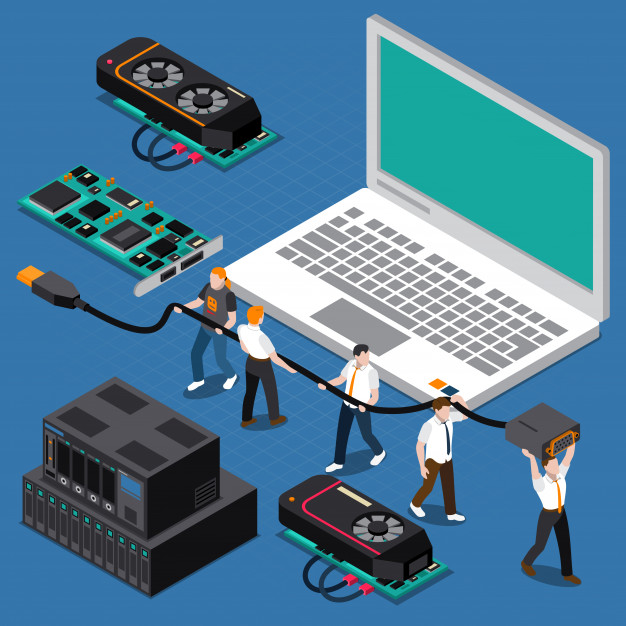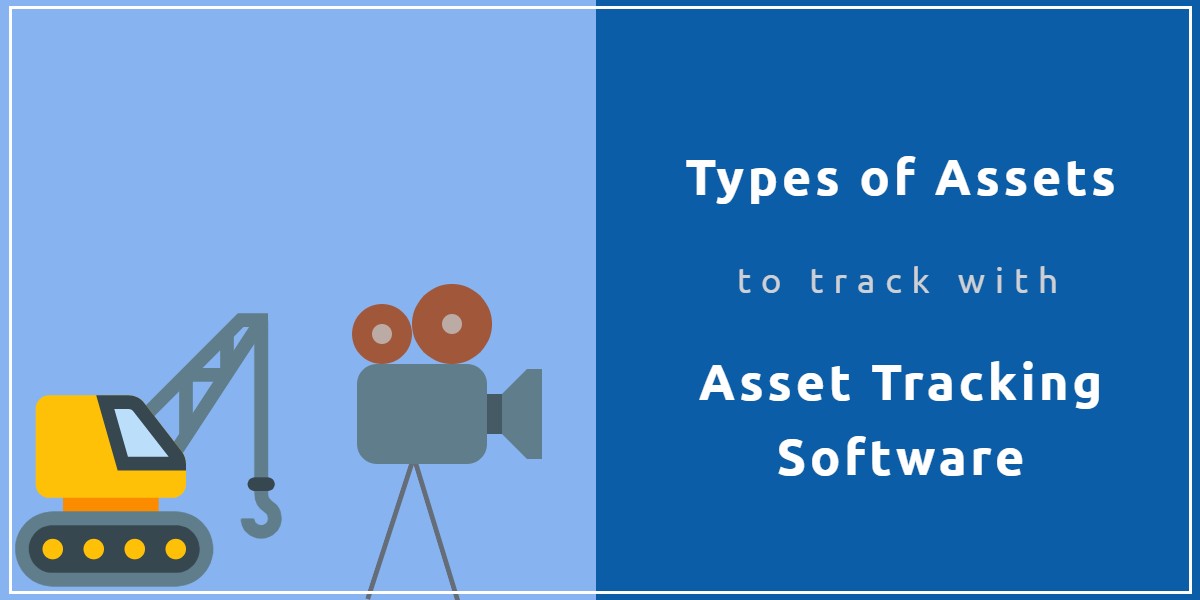Construction, education and health service sectors are recognized as the largest industries in the market, according to the International Labour Organization (ILO). But running on such a large scale comes with its own set of challenges. So how do these organizations manage it? The answer is simple – they adopt the right approach to asset management!
However, finding the right solution isn’t as easy as it sounds. With multiple tracking options available, firms have a tough choice to make.
Traditionally, many organizations opt for manual mechanisms. These may include spreadsheets or on-premise tracking systems. Both of these options have their own inefficiencies. For example, spreadsheets involve a lot of manual data entry and, therefore, there’s a high chance of human error.
When it comes to on-premise software, it becomes a challenge for highly mobile companies to log in data on the go. Along with this, there is a constant need for system maintenance to keep it working smoothly at all times.
Limitations of manual asset management
Apart from the above limitations, there are several other as well that lead to asset tracking roadblocks. Let’s look at some of them below.
1. The risk of equipment theft
Construction and AV companies often tend to suffer from asset loss as a result of theft and misplacement. This is mainly due to the absence of on-site check-ins and checkouts that can easily monitor workflows continuously.
2. Tracking item location
![]()
Whether you’re a part of the health industry or the education sector, you want to know where your assets are and how they’re being used. However, due to the lack of a support system, many organizations fail to document item locations. This greatly increases the chance of unauthorized usage.
3. Risk management
The majority of manual tracking systems lack a proactive approach to asset management. Instances such as equipment downtime can delay workflows. This only makes it difficult for companies to stick to their schedules and deadlines.
To deal with this issue, companies can look to adopt an automated solution program. Such a program will let you opt for preemptive security measures to improve productivity.
To overcome these challenges, organizations across these industries should first list down their requirements. Then, they need to see which cloud based tracking solution is ideal for them. Using such a system will allow them to automate tasks and increase progress as well.
Benefits of asset tracking software
Business organizations have numerous assets to handle. And these assets only keep increasing with scaled-up projects and growing market reach. Therefore, asset management needs to be an integral part of any business plan for such companies. However, it gets a lot more difficult if you do it manually. This is why it is best to opt for automated solutions.
Here are some benefits that asset tracking software offer when dealing with various types of assets:
1. Efficient budget allocation
An automated asset management program helps lower the amount you spend on manual labor. Other than this, tracking software is much more efficient as well.

For instance, there are five extra laptops in the warehouse. And if your spreadsheets don’t account for them, then you might end up spending a lot of money buying more laptops that you don’t need in reality. This, of course, leads to inefficient use of funds, since you’re spending money on something you don’t essentially need.
2. Improved accuracy
While using a manual system for tracking assets, there is a great risk of misplacing data or entering it incorrectly. Imagine putting an extra 1 at the end of a barcode and then not being able to locate that asset. The amount of time and labor spent on correcting such mistakes will only lower productivity.
3. Streamlined vendor management
Organizations can easily record vendor details, keep tabs on quotations and manage purchase orders, all with the help of an automated tracking system. In addition to this, the software allows you to generate balance sheets and track inventory. Moreover, an automated solution eliminates the need for manual intervention by keeping all relevant parties in the loop.
4. Easy scalability
Before the arrival of cloud based systems, companies had physical infrastructure and servers. Such a set up calls for regular maintenance and hardware installation. For businesses with minimal growth, this isn’t such a problem. However, for growing companies, this incurs high costs.
This is why such companies need to focus on a tracking system that’s embedded in the cloud. Companies no longer have to be restricted by the physical server space. They can keep adding new assets as the company expands or even scale down if necessary.
Track different types of assets with tracking software
Asset tracking software is a diversified system that caters to several industries. Depending on the characteristics of the asset, the software can be utilized to match the particular business workflow. Let’s discuss the types of assets for different industries that you can track using such software to understand it better.
1. Assets for the construction industry
The U.S construction industry is by far the biggest across the world. In fact, it also plays a huge role in driving the U.S. economy, with construction companies spending over $10 trillion a year on goods and services. Here are some of the major construction asset categories and the tools included in these purchases:

a) Heavy equipment
This category normally includes equipment for earthmoving, tunneling, material handling and transporting. For such activities, construction companies use forklifts, trenchers and tippers.
The next step is to decide how to track such types of assets. One way to do so is to individually label them with unique asset tags. You can scan these tags and enter them into the tracking software. Doing so allows you to keep tabs on the maintenance and usage of heavy equipment.
b) Hands and power tools
These include small tools like crimpers or clamps or general items like mixers and drills. Different construction companies might organize their tools in a specific manner. For instance, some track their tools in bulk, which allows them to check out larger quantities quite easily. In order to do this, tracking software helps to take mass actions with its RFID technology.
c) Consumables and building materials
Construction companies stock up on building materials and consumables in large quantities. These usually include wood, stone, metals or smaller items like sealants. Consumables are commonly tracked in bulk. However, they aren’t checked back in as they are usually used up on projects.
Read More: Key Challenges In The Construction Industry And How To Solve Them
2. Assets for the healthcare industry
Global healthcare expenditure is predicted to rise at an annual rate of 5.4% between 2017-2022. This is mainly due to the emergence of personalized medicine, increased use of technologies and high demand for public healthcare services.
In order to provide streamlined patient care, the majority of hospitals opt for asset tracking systems. Let’s take a look at the types of assets they can track:
a) Diagnostic equipment
Doctors use these types of tools to diagnose a patient’s condition. Some of the very common types of diagnostic assets at hospitals include medical imaging machines to perform X-rays, ultrasounds and CT scans. Other than this, there are smaller assets like patient scales, stethoscopes, dopplers, and pulse oximetry.
In order to ensure the best performance, biomedical engineers use asset tracking software for lifecycle management for all diagnostic tools.
b) Treatment equipment
These typically include infusion pumps, LASIK surgical machines, and medical lasers. You can also add consumables like gloves, caps, gauzes, and drapes in the tracking software. However, institutes need to frequently replenish such items. Luckily, the software enables you to automate such procurement as well.
c) Life support equipment
Life support equipment forms a major part of the hospital’s expenditures as they include expensive machines that usually last several years. This category covers heart-lung machines, ventilators, dialysis machines, and incubators.
Here, an important aspect is the maintenance and repair of these machines. For that, biomedical engineers can schedule service sessions with the help of tracking software.
Read More: Key Challenges In The Pharmaceutical Industry And How To Solve Them

3. Assets for the IT industry
Global IT spending has recently seen a steady rise with a forecasted growth of 3% by 2020. In order to catch up with this expansion in the market, IT industries need to adopt robust tracking systems.
Such software is especially useful when it comes to monitoring all the types of assets that IT organizations own. The software offers a variety of features and IT firms can use it to track the following assets:
a) Hardware assets
These are mainly physical assets like desktops, laptops, printers, and copiers. With multiple types of assets registered on the company’s network, it sometimes becomes difficult to keep track of them all.
For this purpose, tracking software lets you run automated discovery that scans all IT devices available on the network. This way you can update your inventory in an accurate manner.
b) Software assets
Software assets facilitate numerous tasks in an organization. Due to their intangible nature, companies often struggle with license management and software compliance. To tackle such challenges, tracking software sends out notifications and alerts, enabling you to renew licenses in time. This way organizations can stay compliant and avoid penalties and fines.
c) Mobile assets
A subcategory of hardware assets, mobile devices include cellphones and tablets that firms use for off-site projects. As mobile devices are used in the field, it becomes extremely important to track them rigorously.
For these types of assets, you can run location tracking to monitor all devices. Another concern here is security. You can manage this by enabling password-protected access.
4. Assets for the education industry
To keep up with the changing technology evolution, schools now spend over $3 billion on digital content. This spending pattern is expected to rise in the coming years. Given this rapid growth scenario, schools are most likely going to have to improve their asset management processes.
Tracking software helps in such a situation to evaluate and monitor all types of assets that schools and colleges use. Let’s take a look at some examples of educational assets:

a) Inventory stock
Schools and colleges stock up on a lot of consumable inventory items for their day to day functions. These include stationery, arts and crafts supplies, sports equipment and other such items. The stock of such items frequently keeps running out. So in order to run seamless functions, teachers can easily view which items are available through the dashboard calendar.
b) School transport
Schools also need to track school transport. This is absolutely necessary since buses are sent out all the time. Even if there is a slight delay, the administration should have a backup. This is only possible when schools closely track such types of assets.
c) Hardware and furnishings
Schools own desks, tables, and office equipment. These types of assets last for a long while and need to be looked after properly. For this purpose, tracking software allows educational institutes to run depreciation management. Here staff members can log in details regarding all furniture and fixtures and schedule replacements if necessary.
5. Assets for the AV industry
The professional AV industry has seen much growth, with the emergence of technology trends such as audio advances, IoT and the cloud. As a result of this change, companies are now stocking various types of assets instead of simply focusing on a single type. Here is a list of the types of assets that AV companies are now keeping in their stores:
a) Visual display
These refer to LCD screens, projectors, and monitors. Visual display assets form an important part of the AV inventory. Therefore, companies need to add them to the database in the correct manner. AV companies can do this with the help of tracking software.
The software offers customizable fields for data entry for such types of assets. This enables you to record minute details that come in handy while checking out items.
b) Audio reproduction
To provide the best sound quality, AV companies stock high tech audio cables, connectors, and speaker wires. As these types of assets work in combination with other devices, it is vital to reserve them in time for events. One way to do so is to opt for tracking software that allows for seamless bookings and reservations.
c) Control systems
These typically include control systems enterprise software and media control and distribution systems. Such assets are also known as digital assets or soft assets. To ensure they are up to date at all times, AV companies can track them using relevant software. They can do so through lifecycle management that sends out alerts for maintenance and upgrades.
Time to invest in asset tracking software
Tracking software provides solutions that cater to a wide variety of industries, all across the market. With a variety of features to offer, asset tracking software can be deployed in the construction, education, healthcare, AV and other sectors.
Regardless of the size of the organization or the types of assets, the software improves performance and productivity at all levels. With the option of quick scalability and high data accuracy, all industries can report faster growth rates.
About EZOfficeInventory
EZOfficeInventory is the leading asset tracking software. It enables you to track, maintain and report on equipment from anywhere, at any time.
If you’d like to share any queries reach out to us at support@ezo.io







